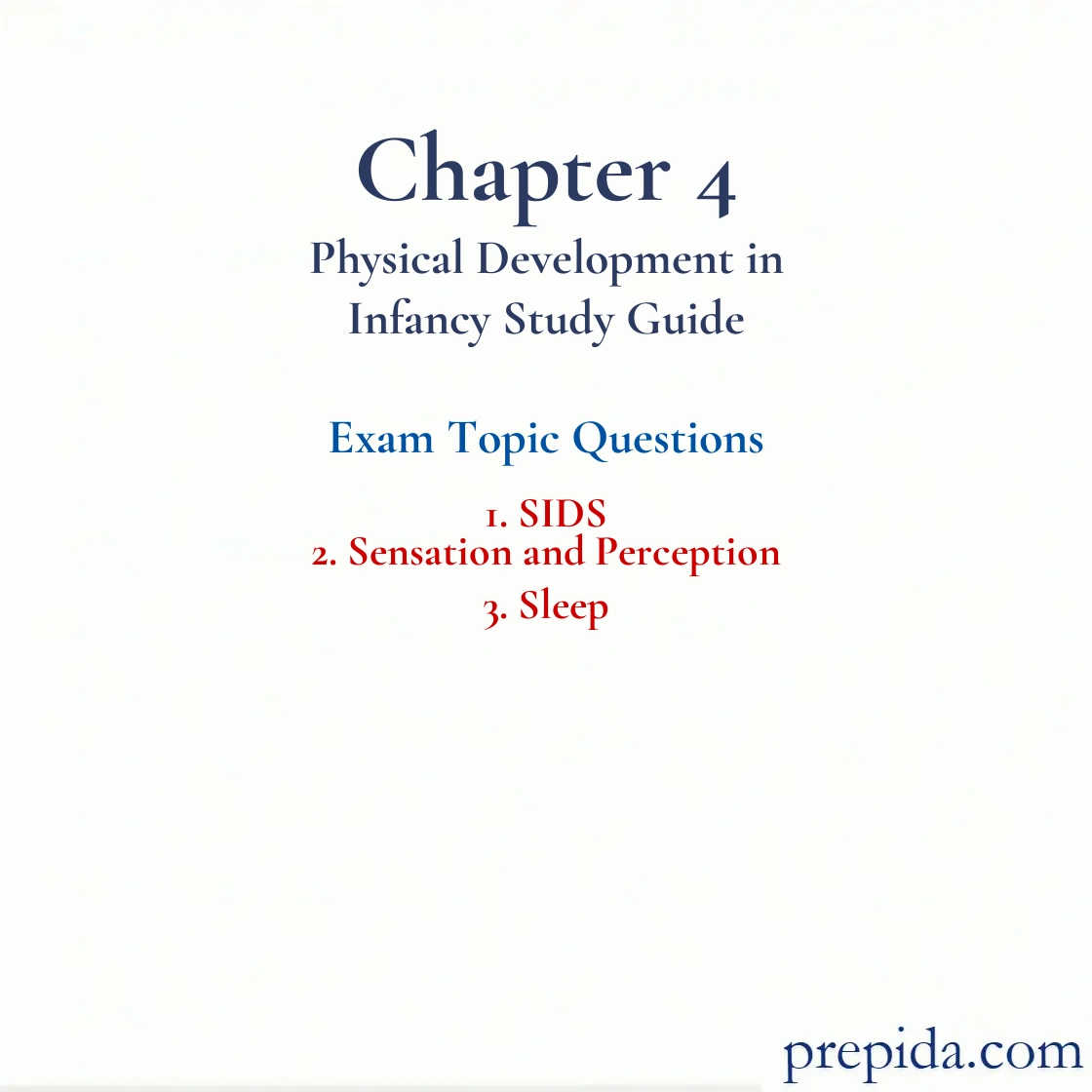
Which of the following is true of the factors that are linked to sudden infant death syndrome (SIDS)?
- Breast feeding is linked to a lower incidence of SIDS.
- SIDS is less likely to occur in infants who do not use a pacifier when they go to sleep than in those who do use a pacifier.
- Infants whose siblings have died of SIDS are unlikely to die of it.
- SIDS is less common when infants and parents share the same bed.
Sudden Infant Death Syndrome (SIDS): A condition that occurs when an infant stops breathing, usually during the night, and suddenly dies without an apparent cause.
Baby Yoshi has a condition that is a risk factor for SIDS. Sometimes, she has a temporary cessation of breathing in which her airway is completely blocked, usually for 10 seconds or longer. This condition is known as
- parasomnia.
- arrhythmia.
- sleep apnea.
- catathrenia.
Which of the following statements is true about sudden infant death syndrome (SIDS)?
- It is the least common cause of infant deaths in the United States.
- Its level of risk is high at 36 to 48 months of age for infants.
- It usually occurs when infants stop breathing, usually during night, and die suddenly without any apparent reason.
- Its level of risk is high when infants sleep on their backs, in a supine position.
Sudden Infant Death Syndrome (SIDS): A condition that occurs when an infant stops breathing, usually during the night, and suddenly dies without an apparent cause.
Who is at the highest risk of SIDS?
- Malachi who is four weeks old
- Tyrell who is six weeks old
- Chaz who is three months old
- Isaiah who is ten months old
Sensorimotor Stage: The first of Piaget’s stages, which lasts from birth to about 2 years of age; infants construct an understanding of the world by coordinating sensory experiences with motoric actions.
Which of the following does the American Academy of Pediatrics (AAP) recommend to reduce the risk of sudden infant death syndrome (SIDS)?
- Infants should be placed to sleep in the prone position.
- Infants should be placed to sleep on their backs.
- Infants should be placed to sleep on very soft bedding.
- Infants should be placed to sleep in a bedroom without a fan.
Sudden Infant Death Syndrome (SIDS): A condition that occurs when an infant stops breathing, usually during the night, and suddenly dies without an apparent cause.
Amira is concerned about putting her baby on his stomach to sleep because of the risk that he might stop breathing, usually during the night, and die suddenly without an apparent cause. In other words, she is concerned about
- shaken baby syndrome.
- sudden infant death syndrome.
- Down syndrome.
- marasmus.
Which of the following is generally accepted to be the most critical factor in predicting whether an infant will develop sudden infant death syndrome (SIDS)?
- prone sleeping
- supine sleeping
- perceptual-motor coupling
- swaddling
The interpretation of sensory information is called
- sensation.
- reception.
- perception.
- transition.
Perception: The interpretation of what is sensed.
________ occurs when information interacts with sensory receptors-the eyes, ears, tongue, nostrils, and skin.
- Sensation
- Perception
- Reception
- Transition
Sensation: The product of the interaction between information and the sensory receptors—the eyes, ears, tongue, nostrils, and skin.
From an evolutionary perspective, which of the following is true of sleep?
- Sleep plays a minor role in brain plasticity.
- Sleep is essential to clearing out waste in neural tissues.
- Synaptic connections between neurons decrease during sleep.
- Sleep hinders the consolidation of memories.
How is sleep in infancy linked to cognitive development?
- Too much sleep in infancy is connected to decreased alertness later on.
- Lower quality of sleep at one year of age is related to lower attention regulation and behavioral issues by three to four years of age.
- Two hours less sleep than average every night in infants increases cognitive function by three to four years of age.
- If babies do not get good enough sleep during infancy, their brains will completely stop developing.
Attention: The focusing of mental resources on select information.
The most common infant sleep-related problem reported by parents is ________.
- nighttime waking
- sleepwalking
- sudden infant death syndrome
- choking
Infant nighttime waking problems at one year of age predicted
- attention deficit disorder at four years of age.
- lower sleep efficiency at four years of age.
- increased hyperactivity at four years of age.
- no difference in sleep at four years of age.
Infant nighttime waking problems have consistently been linked to
- parental negligence with regard to sleep-related interactions with the infant.
- extrinsic factors such as high levels of traffic noise.
- intrinsic factors such as an alcoholic mother.
- excessive parental involvement in sleep-related interactions with the infant.
Attachment: A close emotional bond between two people.